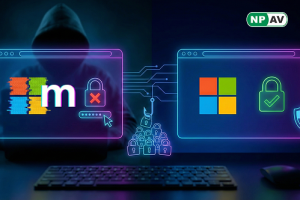Protect yourself from phishing scams

Now a days, internet usage has grown, phishing scams have exploded. Hacker use the different different technics to hack your personal data, bank details, etc.
Some of the phishing scam messages we’ve come across include phony insurance cards, tech support, friend/link request, shared login screens, shared documents, breaking news, scans, someone who cares has sent you a greeting card, you sent a payment, your computer is infected, air fare sale, your bill is now available, software update, notification pending, order confirmation, parcel delivery problem, travel reservations, is this you in this video, I liked your profile … here’s mine, job offer, erotic photo, your e-mail account will be terminated, credit card overdue, wedding invitation, downloader, self-extracting archive, fun content and a lot more.
Here are a few tips to keep you safe from phishing scams
1. Don’t give out personal details
This is such an obvious phishing scam but worth repeating over and over again. Legitimate websites and organisations are not going to randomly ask for information such as passport number and insurance numbers. In short, you should be extremely careful about handing over personal information. Of course there are exceptions such as online bookings for air travel when the company might ask for your passport number but the context will let you know whether it’s ok. Most legitimate organisations will already have relevant information such as your bank with you account numbers and address.
2. Is the website you are visiting secure?
Before submitting your bank details or other sensitive information there are a couple of checks you can do to help ensure the site uses encryption to protect your personal data:
Check the web address in the address bar. If the website you are visiting is on a secure server it should start with “https://” (“s” for security) rather than the usual “http://”.
Also look for a lock icon on the browser’s status bar. You can check the level of encryption, expressed in bits, by hovering over the icon with your cursor.
3. Don’t give out your email password
Some websites with a social network flavour ask you to invite your friends to join by entering your email address and password. This may be a phishing scam. You should never do it. Your email address and password is yours – if you put them both into a website you’re simply putting them out there for every electronic snooper and digital deviant to scoop up and misuse.
4. Ignore pop-ups
A common phishing scam still doing the rounds after all these years is the pop-up window that says your computer is infected and you need to click on said link to get software to protect yourself. Click on the said link and you’ll end up with a plague of adware on your computer, applications that take over your computer or some type of malicious software. Known as these types of pop-up are becoming particularly virulent. Guard against them by ignoring them and closing them down.
5. Don’t click links or attachments from sources your don’t know
Many people are now savvy to the potential dangers of attachments and links in emails from sources they don’t know. As a result, hackers’ social engineering endeavours are becoming increasingly sophisticated. A current trend, and it’s easy to see why, is to mock up emails that purportedly come from your bank. Of course hackers don’t know whether it’s your bank or not but these emails go out in batches of hundreds of thousands and even millions, and among this huge target market the emails will land in the inboxes of some people who do use that bank. Hackers only need a few ‘hits’ and they’re in business.
The emails are often very professional in their design and will at some point in the text ask you to click on a link to verify your information, reset your password, or login to view anything. Don’t. You never know what sort of malicious code you’ll be introducing onto your computer. If you want to check whether it is a phishing attempt compare it to know emails from your bank – and see the difference.
6. Avoid emails that are too good to be true or try and sell you something
Ever fancied a free Apple iPad, enhancements to ahem… various physical appendages, cut price air tickets or a watch that might have tumbled out of a child’s Lucky Bag? These and a raft or other offers are widely touted in emails as special, low-cost, one-off offers. They often arrive disguised as emails from well-known retailer, both online and offline. They tempt you into clicking on a link to take advantage of the offer and bingo, before you know it your computer is doing strange things or you’re receiving bank statements showing that you’ve made online purchases for things you never did. That link you contained malware and the malware has done its job and lifted your credit card information. The golden and simple rule is ignore emails selling things much like you would ignore a stranger approaching you on the street trying to sell you something.
7. Keep your computer secure
Although we’ve put this one at the bottom of the list it’s actually the first thing you should do, that is get good antivirus software on your computer, one that layers signature based detection with behavioural-based protection. Some phishing emails or spam may contain software that can record information on your internet activities or open a ‘backdoor’ to allow hackers access to your computer. Net Protector Antivirus software will detect and disable malicious software, while spam detection will stop phishing emails from reaching you. It is also important to install a firewall. This will help keep the information on your computer secure while blocking communication from unwanted sources. Make sure you keep up to date and download the latest security patches for your browser. If you don’t have any patches installed, visit your browser’s website.
THANKS NP AV TEAMS






